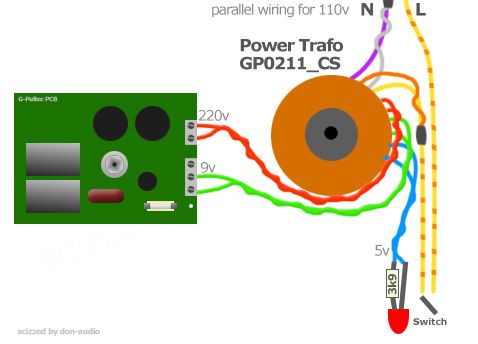Neily said:That looks amazing....
Could someone explain to me how this can be built using only 1 toroidal? I see some gpultecs with 1, some with 2 and I'm confused. Sorry if it's a stupid question, I'm new....
I'm going to be building mine soon... I'd prefer to use only 1 if i could.
Hi Neily, thank you very much
the power trafo is a custom wounded trafo especially for the g-pultec project.
I tryed some different other trafos and came to the point to run a custom trafo production that fits perfect to this project.
You can get this trafo direct from me or at my lil online shop http://don-audio.com/g-pultec-power-trafo-sec-220v-9v-5V_2
I build my third g-pultec now and with this trafo there are no noise or heat problems cause the 9v are better for the regulators than 12v. At the end you need 6,3v for the tube so 9v is the perfect match. 5v is a seperat winding for the led or 5v light bulb. This trafo can also be fixed horizontal and vertical in a 2HE case cause of its small size.
be careful with this high voltage project. But this is sounding awesome and worth all the work.





